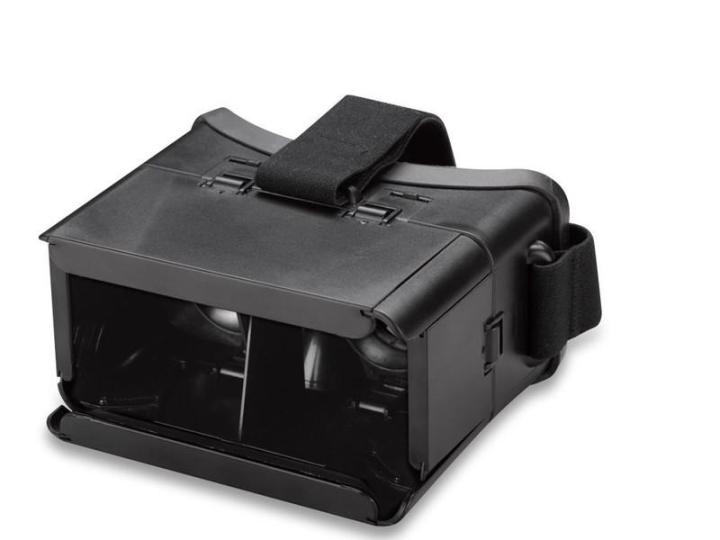
Much like Carl Zeiss’ VR-One Headset and Samsung’s Gear VR headset, the Archos VR Glasses rely on a smartphone slotted in a compartment near the wearer’s eyes to achieve their immersive effects. There are no shortage of this type of virtual reality product, but Archos is smartly carving a niche from the niche: it’s going after frugal customers by retailing the VR Glasses for $30, a price point comparatively palatable against the $100 VR One and $200 Gear VR. And unlike the aforementioned headsets, the Archos says its glasses are not restricted to a single type of smartphones or operating system. They’re compatible with any handset up to 6 inches in length, though Archos does recommend one with at least a 1080p display and quad-core processor.
Related: Carl Zeiss’ VR-One headset uses your iPhone 6 or Galaxy S5 to create its virtual world
Software is arguably what sells virtual reality, though, and Archos was a bit cryptic about where and how owners will obtain applications and games. The company says the VR Glasses are compatible with more than 100 apps, but makes no mention of specific platforms. And despite the company’s apparent commitment to platform agnosticism, watching 3D movies will require the Android-exclusive Archos Video Player.
Ultimately, though, the VR Glasses don’t appear any worse than other virtual reality solutions coming to market. The nascent field hasn’t yet hit its stride – every company seems to have their own take on the technology. Once virtual reality evolves towards a more streamlined form factor, it may become a lot more compelling. Early adopters who can’t resist the bleeding edge, though, will probably be satisfied with devices like these prototypical glasses for now.
Related: Virtual reality headsets could help your fear of flying
The Archos VR Glasses will be available for purchase in November from Archos.com and other online retailers.


